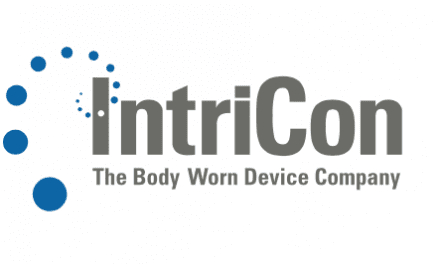Staff Standpoint | July 2019 Hearing Review
Unless you’ve been locked in your soundbooth for the past three years, you’re probably well aware that a new class of over-the-counter (OTC) hearing aids will get the green light from the US Food and Drug Administration (FDA) sometime around August 2020, with the notice of proposed rulemaking (NPRM) slated for this November. And, if you’re like me, the prospect of OTC hearing aids may make you shrug. The sky isn’t falling; personal sound amplification products (PSAPs), mail-order hearing aids, and low-cost amplification devices have been available for over 40 years (eg, the Palmquists established Lloyd’s in the mid-1970s).
However, I think it’s unwise to assume OTC devices will have no effect on your business or the customers who might walk into your office post-2020. So here are some thoughts about what, at minimum, you might consider:
Know the revenue-per-clinical-hour of your and your staff members’ services. In truth, this is something you should already know, and it should be part of your practice’s key performance indicator (KPI) dashboard. However, relative to OTC services, you might think of it as your baseline. Understanding the dollars-per-hour (gross margin [net revenue minus cost of goods] divided by actual clinical hours) each dispensing professional in your office generates allows for educated decisions about how “low you can go” in servicing these new clients and/or offering an OTC-like alternative. An excellent tutorial on “how low you can go” is provided by audiologist Dan Quall on the Hearing Review YouTube channel at: https://bit.ly/2wTeTv4.
Establish clinical protocols and pricing for PSAPs and OTC devices. It’s wise to be prepared and set a minimum standard of care for patients who are seeking help with these types of devices. Maybe your policy is not to service them at all, period. Fine. That’s your decision as a practitioner and business manager. However, should OTC become a greater part of the competitive landscape, you may change your mind—requiring you to establish a protocol for how to deal with them.
There are many options for pricing. In a dispenser survey we conducted last year, about one-quarter (26%) of respondents said that their lowest-priced hearing aid did not come with all the services as their standard hearing aids, suggesting a trend toward either service packages or possibly just not offering audiological services with the very lowest-priced aid (median price: $995). In some cases, these are the aids you pull out of the drawer when it’s apparent price is the only remaining obstacle for the patient to receive a professional fitting. Similarly, the median hearing aid unit price for those reporting a “hybrid bundling” model (ie, a blend of bundled and unbundled pricing) was $250 and $108 less compared to the bundled pricing model in the economy and mid-level performance categories ($1250 vs $1500 and $2142 vs $2250, respectively). Median prices were the same ($3000) in both models for premium aids. So, it’s likely these practices are already utilizing innovative pricing models for competing with Big Box and other low-price outlets.
Keep an eye out for good products from reputable manufacturers. Anyone who has read reviews about and/or tried PSAPs can tell you this: there are some surprisingly good devices mixed in with a lot of garbage. So buyer beware. Obviously, as a professional, you don’t want to be recommending or servicing garbage—even if you aren’t selling it directly. My admittedly biased experience has been that the best PSAPs tend to draw on the expertise of former hearing industry engineers and audiologists who know amplification and how to build a hearing aid.
Like it or not, you may be forced into understanding more about PSAPs and, ultimately, OTC devices. At the very least, the more popular brands like Eargo, Sound World Solutions, Lucid, Bose, iHEAR, Nuheara, Alango, etc, should be on your radar. Also, don’t forget the options right in front of you. There are plenty of established hearing aid manufacturers that offer high-quality low-cost devices, and—given the market forces of online, Big Box, and pharmacies—their list of options will become evermore compelling. Just as one example, Unitron’s Flex system offers a very low-cost option which is upgradable if the consumer wants to graduate to higher performance levels.
No, the sky isn’t falling. But that doesn’t mean you shouldn’t watch the weather or make sure your roof doesn’t leak.
Citation for this article: Strom KE. Preparing for OTC hearing aids. Hearing Review. 2019;26(7):6.







Couldn’t agree with your sentiment more Karl, if professionals don’t take consumer needs and desires seriously then they will lose out.
Thanks Geoff.
I appreciate that you listed the more popular brands of PSAPs and OTC devices. Can you direct us to any studies that compare their features and performance?
Hearing Review has published two such studies recently, one in our November 2018 edition by Voss et al titled “Coupler and Real-Ear Performance between PSAPs and Hearing Aids” and another by Smith, Wilber and Cavitt in our July 2016 edition titled “PSAPs vs Hearing Aids: An Electroacoustic Analysis of Performance and Fitting Capabilities.” I would be interested in learning other recommended studies to review from our readers.